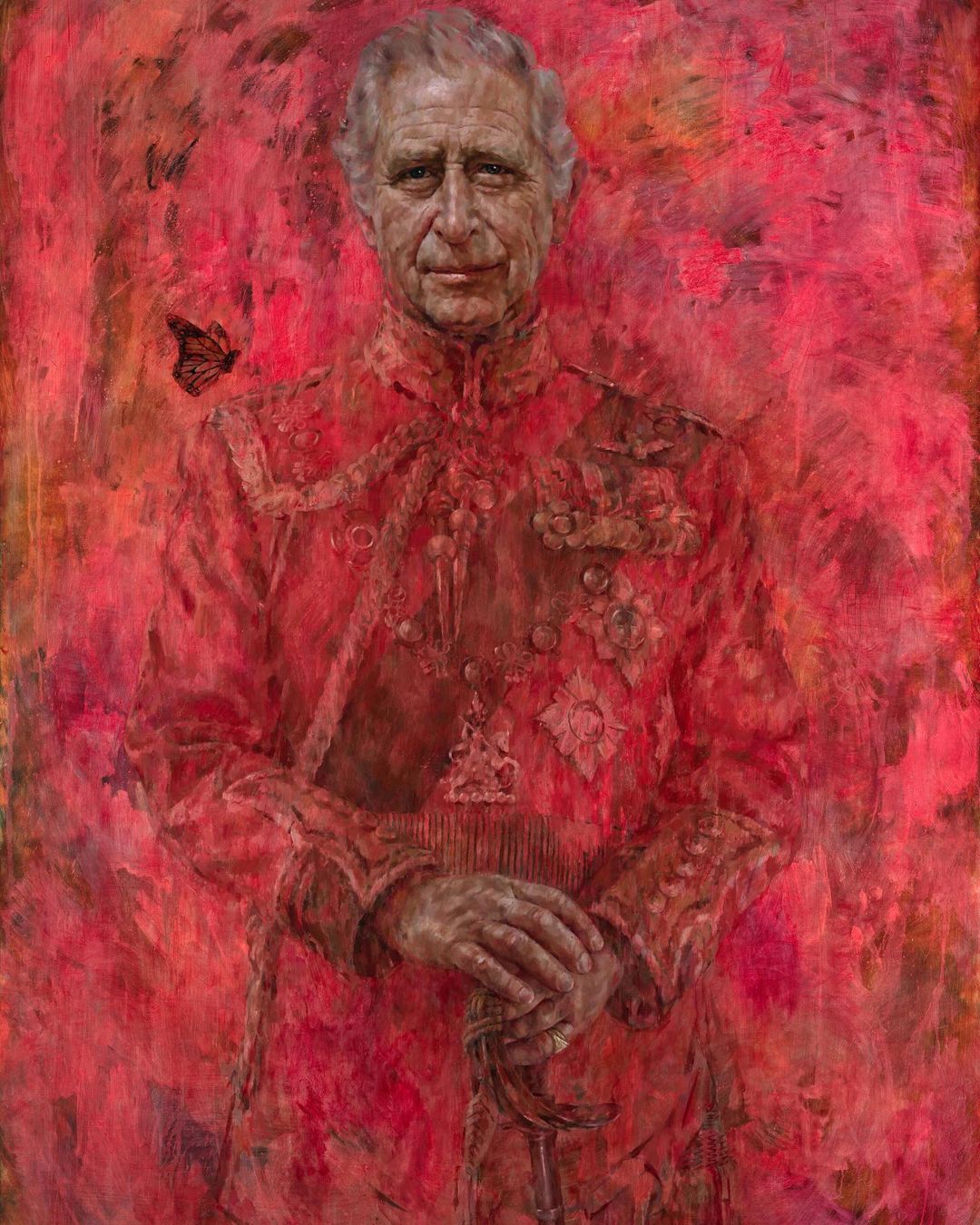*Note: The portrait seen above, painted by Jonathan Yeo, is unfortunately not the portrait referenced in this story.
Here in America, whenever a new president is inaugurated, all federal buildings immediately replace their displayed portraits of the president. Many public schools also display photos/portraits of the president. I never gave it much thought because, hey, we have an elected head of state and it seems reasonable for federal buildings to make that change. But what about countries without an elected head of state? Well, the United Kingdom has had a new king, a new head of state, since September 2022. Soon after QEII’s death, Buckingham Palace tried to interest any and all government buildings, schools, military bases and hospitals with new portraits of King Charles, likely to replace their existing portraits of QEII on display. Only 31% of those buildings/schools/hospitals wanted a portrait of Charles.
It was a celebratory multimillion pound scheme to mark the beginning of King Charles III’s reign. Free portraits of the king were offered to all public bodies – every town hall, university, hospital and even jobcentre – so the new monarch’s visage could gaze down on his subjects. The initiative would provide “a reminder of the example set by our ultimate public servant”, said the then Tory deputy prime minister, Oliver Dowden.
But the current government is proving coy about where exactly any of the images of King Charles ended up after it admitted more than 46,000 public institutions had showed no interest. More than £2.7m was spent meeting requests for the pictures and while take-up was patchy, more than 20,000 images of Charles in a medal-laden Royal Navy uniform were sent out – a 31% hit rate.
But the reluctance to reveal where they ended up has emerged from a Guardian freedom of information request which the Cabinet Office has been resisting for many months. Last October it rejected the request for the information by arguing disclosure would be an “actionable breach of confidence”. In effect it implied a public authority which requested a portrait of the king to display in public might sue the government for revealing that it had done so.
When the Guardian appealed on the grounds that “requesting a portrait of the king funded by the taxpayer for the express purpose of being publicly displayed cannot reasonably be considered a confidential matter”, it dropped that justification and changed tack to claim release would “prejudice the effective conduct of public affairs”, a different exemption under the Freedom of Information Act. It said disclosure “would be likely to trigger questions about why certain organisations requested the portrait and (by extension) why others did not” and that organisations would be distracted from operational activity by having to answer them.
One royal historian said it was the latest example of the government acting to protect the reputation of the monarchy and a sign of anxiety in Whitehall about any further undermining of the institution’s reputation.
The refusal comes amid a steady decline in the proportion of the adult population who believe the monarchy is good for Britain, falling from 60% in July 2019 to 51% in March 2024, according to You Gov. The combined proportion of people who thought it was either bad or neither good nor bad rose in the same period from 34% to 44%.
Graham Smith, the chief executive of the anti-monarchy campaign group Republic, said declining public support meant “the chances of there being controversy around spending money on portraits is far more likely than in the past”.
The government has already said that less than a third of eligible public institutions asked for a portrait, including only 3% of hospitals, 7% of universities and only one in four Church of England churches. National and local government bodies were far more enthusiastic with 73% making requests, while every one of the 23 coastguard bodies received a portrait. But overall more than 46,500 public institutions that could have ordered a portrait did not.
You can go to the Guardian story for a fuller picture on the obfuscation regarding the newspaper’s freedom-of-information request. There are several moving parts to the story, and all of them are bad news for Charles and the monarchy. There’s the baseline story of how few people were interested in a FREE portrait of the new king, which is hilarious enough on its own. But then there’s the other aspect, where the government is trying to cover up the lack of interest. They’re behaving as if “asking questions about how many buildings rejected a new portrait of the head of state” amounts to treason, or that it’s everyone’s job to protect the reputation of the monarchy, even when the story is about how few people give a sh-t (and the actual reputation of the monarchy is in the toilet).
All of this reminds me of something else – the buffet of emotional-support polls cropping up these days, all to force-feed the notion that the British public’s enemy #1 and #2 are Prince Harry and Meghan. But even in the most ham-fisted polls, you can see a steady decline in support for Charles and especially Camilla. As it turns out, the whole-ass king and queen have done the most reputational damage to the monarchy.
Photos courtesy of Avalon Red, Cover Images, Jonathan Yeo for Buckingham Palace, Tatler cover, BP’s social media.
